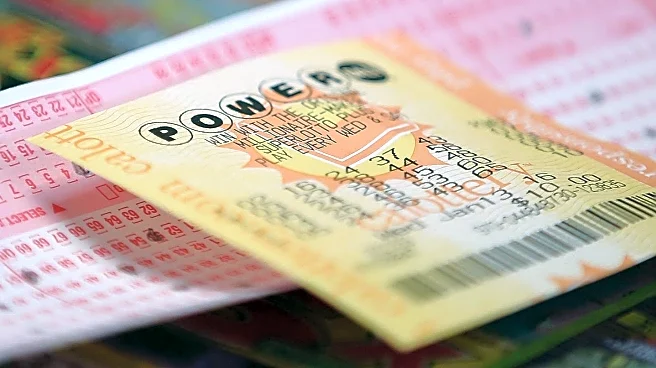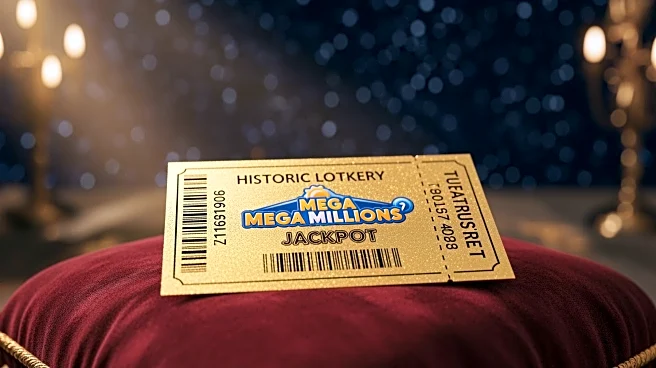What's Happening?
The Mega Millions jackpot has surged to an estimated $900 million following Friday night's drawing, where no ticket matched all six winning numbers. This marks the 38th consecutive rollover since the last
jackpot winner on June 27, when a Virginia ticket holder claimed $348 million. The winning numbers from the recent drawing were 16-21-23-48-70, with a Mega Ball of 5. The upcoming drawing on Tuesday is set to be one of the largest in U.S. lottery history, representing the eighth-largest Mega Millions jackpot since the game's inception in 2002.
Why It's Important?
The lottery industry is a significant economic sector in the U.S., with approximately half of Americans participating in state lotteries. The Mega Millions jackpot reaching $900 million underscores the growing interest and participation in lottery games. This prize is only the third time the jackpot has reached such a high amount, highlighting the rarity and excitement surrounding this event. The decision for winners between a lump sum or annuity payout has substantial financial implications, with federal and state taxes affecting the final amount received.
What's Next?
The next Mega Millions drawing is scheduled for Tuesday at 11 p.m. Eastern Time in Atlanta. Ticket sales will close one to two hours before the draw, depending on state regulations. Winners will face the choice between a lump sum payout of $415.3 million or an annuity option distributing the full $900 million over 30 payments. The odds of winning the jackpot are approximately 1 in 290 million, making the anticipation and excitement leading up to the drawing significant.
Beyond the Headlines
The Mega Millions lottery not only offers substantial financial rewards but also raises questions about the impact of gambling on society. The allure of winning large sums can lead to increased participation, but it also poses ethical considerations regarding gambling addiction and financial responsibility. The decision-making process for winners, including tax implications and payout options, reflects broader economic and social dynamics.












